 [After falling into obscurity for decades, the Puerto Rican Young Lords Party once again occupies the spotlight in New York City. Starting this summer, a tripartite exhibition examining their history and legacy, “¡Presente! The Young Lords in New York,” opened at the Bronx Museum of the Arts (July 2-October 18), El Museo del Barrio (July 22-December 12), and Loisaida Inc. (July 30-December 1), organized and co-curated by all three organizations.
[After falling into obscurity for decades, the Puerto Rican Young Lords Party once again occupies the spotlight in New York City. Starting this summer, a tripartite exhibition examining their history and legacy, “¡Presente! The Young Lords in New York,” opened at the Bronx Museum of the Arts (July 2-October 18), El Museo del Barrio (July 22-December 12), and Loisaida Inc. (July 30-December 1), organized and co-curated by all three organizations.
A short-lived (1969-72) but influential collective of young radical activists whose founders included Geraldo Rivera and Pablo Guzman, the Young Lords bear comparison with the better-known and more celebrated (also more reviled) Black Panther Party, their African-American counterpart. Mike Newton’s October 8, 2015 review of those shows for The Indypendent, “Praise the Lords: ’60s Puerto Rican Group Has Endless, Sprawling Legacy,” provides a brief summary of the collective’s trajectory and significance. [Note: “Geraldo Rivera was not one of the founders of the Young Lords, and was never a member – he was the attorney for the New York YLO/YLP,” according to former YLP member
Here I want to highlight something that emerged from that movement pertinent to documentary photography at the time and no less so today. Not long after the Lords emerged as a force in this city, New York-based photographer Michael Abramson made himself an instrument of the Young Lords Party. He asked the Young Lords to show him the world from their perspective, submitted himself and his images to their analysis, and in 1971 turned the editing of his commercially published book, Palante: Young Lords Party — including control of all the text, and the production of much of it — over to his subjects.
Coming at a time when the vexing issue of the power dynamic in documentary photography had only begun to undergo questioning, Abramson’s remarkable decision had great resonance. So, 44 years ago, I reviewed that book, which appeared in a new edition from Haymarket Books in 2011. Here’s that review as it appeared in my “Latent Image” column in the Village Voice, October 14, 1971. — A. D. C.]
•
Breakthrough in the Gray Room
I have written frequently about the pervasive stagnation afflicting contemporary photojournalism, an ineffectuality bred of blind devotion to the false god Objectivity and exclusive concentration on situations reflecting the multiple stalemates in current societal crises, rather than the solutions thereto.
Most photojournalists have consistently avoided going beyond the professionally fashionable form of image-making, which permits only two basic kinds of photographs and their variants. The first of these includes photographs of the victims of warped cultural systems, a genre represented at its nadir by Davidson’s East 100th Street and at its peak by Herb Goro’s The Block. These two versions of the same theme are illustrative, insofar as they demonstrate that there can be marked qualitative differences in works created on the basis of this approach to the issues; within its strictures, therefore, there exists the possibility of success as well as failure. That possibility, along with what I feel is an imperative need for sociological data and accounts of individual sufferings, for the record, validates this approach despite its limitations.
Similarly, one can justify — on basically the same grounds — the omnipresent photographic coverage of demonstrations and confrontations which is the second fashionable approach. Theoretically, at least, we do need these images ˆ or, rather, will need them at some point in the future distant enough that we can consider these crises as history and deal with them on those terms.
Nevertheless, it should be obvious that while we can rationalize a legitimacy to encompass such images, our defense of them is inevitably based on intellectual, even scholarly grounds, and the attitude implicit in that defense is so remote in its scientific detachment as to be not only pedantic but inhuman. Considered in terms of real lives in a very real present (as opposed to the hypothetical value of full data and extensive archives in an increasingly uncertain future), it is clear that neither Davidson’s book nor Goro’s accomplished any tangible alleviation of suffering for either their specific subjects or others in the same situation. Whatever their purpose, then, and no matter what intentions lie behind them, photographs of the victims function for the photographers themselves and for their audience more to confirm their generalized sympathy for those whose lives have been undermined by injustice than as stimuli to action. For the victims themselves they serve no positive purpose whatsoever, and may actually do them harm by merging their personal agonies into an endlessly swelling documentation of suffering so overwhelming as to paralyze anyone who might otherwise be prone to act against it. Such images are testimonies to the bleeding hearts of the photographers who make them, and the bandaid stockpiles of their viewers, and little else.
By the same token, the now-standard confrontation images neither deal with the people involved in demonstrations, on either side, as individuals, nor make any attempt to go beyond the impasse such demonstrations represent to seek out solutions. Abiding by the law of objectivity, they depersonalize their subjects and further rigidify attitudes; they close minds and confirm prejudices, never the opposite. Yet, incomprehensibly, they are permitted to serve as evidence that the photographers who make them are open-minded and unbiased, that they are somehow epitomizing for us visually the Great American Credo that not only are there two sides to every question, but that both sides are necessarily right.
Charitably inclined as I am, I have heretofore ascribed this misfunctioning of photojournalism to lack of insight and example, rather than to its more probable sources, which are a lack of real moral commitment to either side of any major question and a fear that if, as a photojournalist, one takes sides, one may prove to be not only unfashionable but wrong. But my charity has been depleted considerably over the past several years, and the appearance of a brilliant example of what the new photojournalism can be — Michael Abramson’s Palante: Young Lords Party — indicates that it should no longer be necessary.
Abramson has been working with the Young Lords since 1969. In the course of his experience with them, he came to a philosophical conclusion about photojournalism which runs parallel to some of the questions I’ve been raising in this column. In his Afterword to Palante (McGraw-Hill) he writes, “It is time for photographers to stop photographing the victims of America and begin to record the struggle of those who fight against that victimization. Alternatively, it is of equal importance to examine those who perpetuate and are responsible for this victimization … It is my hope,” he adds, “that this book will enable people to understand what it means, in deep personal terms, to be a revolutionary in this society.”
Clearly, Abramson is — or, to be more precise, has become — fully committed to the Lords both as individuals and as an organization; he has thus relinquished any claim to pure objectivity. Yet I think it would be instructive for other photojournalists — particularly those concerned with preserving their technical objectivity at all costs — to read Palante and to compare it with some classics in the genre, for it is certainly no less objective than The Block, or An American Exodus, or How the Other Half Lives, or Death in the Making, to cite just a few. The text — which, with the exception of Abramson’s note and a few official manifestos, is made up of transcriptions of conversations with the Lords — is refreshingly free of cant, dogma, and sloganeering. Along the way, the Lords discuss almost all their activities and recount the major events in their history as an organization, and Abramson’s powerfully simple images cover the same ground, so that the book, aside from being a solid and persuasive argument for the Lords, is also a thorough document of their past and present.
Stylistically, then, Palante could be described as traditional. The difference which makes it a true breakthrough in the gray room is that Abramson chose to commit his energies as a photographer to a group of people who not only are aware of what is wrong in their lives but have clear and cogent ideas about how to change it. Such a high-profile approach to the issues is certainly dangerous, and no doubt will create a lack of credibility for Abramson in certain circles — the same circles which insist that if you’re going to do a story on prison conditions in New York City, you’re obliged to let Prison Commissioner and apologist George McGrath have his say in obeisance to the equal-time rules. Abramson may not be “objective” but neither he nor the Lords — who share credit for the book — are propagandists either. In fact, what makes the book not only a moving document of a significant struggle but a tool for change in itself is that it is a series of personal testaments and hard-won insights into America, not a phrase-mongering diatribe.
Palante sets a high standard for activist photojournalism, and shows the way. It will take courageous, committed photographers to follow Abramson’s lead, but the challenge implicit in its existence is one which we have every right to insist be met from now on.
•
(First published as “Breakthrough in the Gray Room,” Village Voice 16:41 (14 Oct. 1971,) pp. 32-33. Reprinted in Coleman, A. D., Light Readings: A Photography Critic’s Writings, 1968-1978 (First ed. New York: Oxford University Press, 1979; second ed. Albuquerque: University of New Mexico Press, 1998), pp. 82-85.


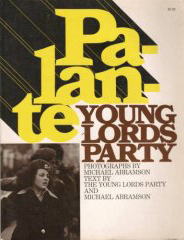
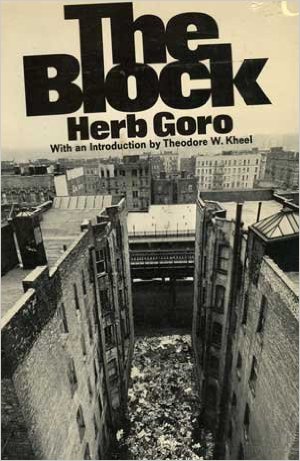
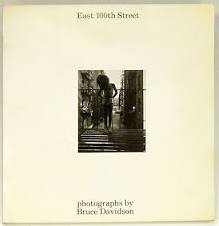
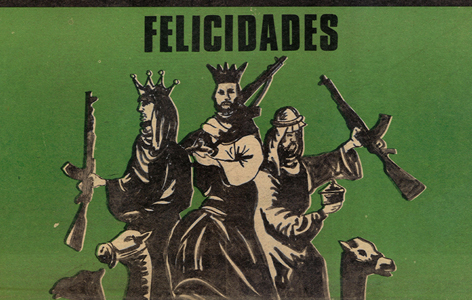
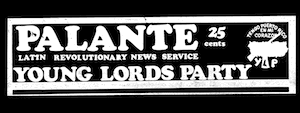
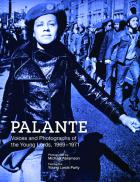




“What matters is not to know the world but to change it.”
― Frantz Fanon, Black Skin, White Masks
Somehow, getting the well-meaning, who are in agreement about the injustice, to act, or even for a few to act … that seems to be the question. What photography makes it so? Or is it some larger context into which a photograph – the right image at the right time – that is the trigger?
I doubt that we could come up with any strategy or formula for a photograph that would stir diverse people to action. I don’t think that analysis of photographs that have proven effective in that way would propose a methodology. Much of it is a matter of chance. But the willingness of photographers to address tough issues, large and small, is certainly bedrock.
Hi – just want to make a correction – Geraldo Rivera was not one of the founders of the Young Lords, and was never a member – he was the attorney for the New York YLO/YLP